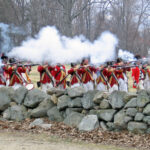Show Time for New England Summer Theater | First Light
Summer theater in New England creates treasured memories for both audiences and performers.
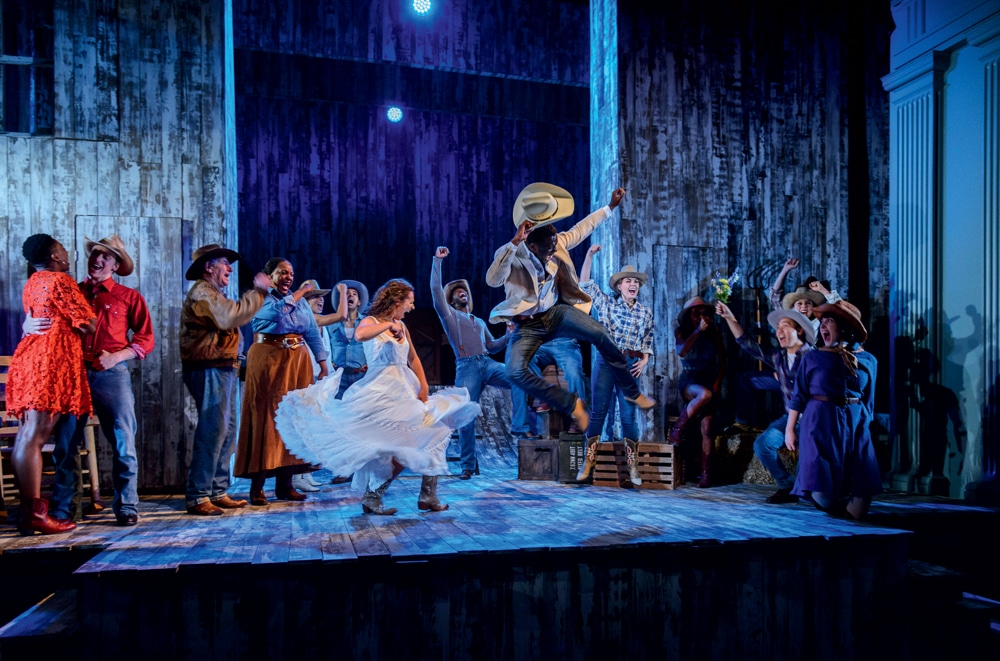
Coffee By Design | Portland, Maine
Photo Credit : Katherine Keenan
Photo Credit : Hubert Schriebl
When twilight begins to fall before a performance at a summer playhouse, local townspeople are likely to be picnicking outside. This is vacation season. The stage fare tends to be on the lighter side—a famous comedy, perhaps, or a musical, or a classic drama like Our Town. But for the countless young actors nurtured by seasoned professionals at a summer theater, this is their sacred ground. Often they will have rehearsed one play in the morning and performed another at night. Their days and nights blur, and they will be exhausted. Afterward, though, newcomers and Broadway veterans alike will remember the intimacy, the sense of family in the theater company and in the village where locals housed and fed them and told them they were terrific.
My wife grew up in a town with a summer theater, and she remembers the magical spell that was cast just before each show began. When the audience filed into the old barn that served as the theater, there were candles burning in holders at both sides of the stage. After everyone had settled, a local youngster would grasp the long handle of a candle-snuffer and walk across the stage, extinguishing the flames, then knock three times on the wall. This signaled to the audience and the actors backstage that the play was about to start, and the world of Peterborough, New Hampshire, would fall away and a new one unfold.
—
My friend Tim, a former high school English teacher, has appeared in 15 productions by the Peterborough Players. He talks about being onstage with the famed actor James Whitmore, who over the years came back to the Players many times, never forgetting that it was here that he began his celebrated career. “He taught me to pay attention to everything onstage,” Tim says. After one performance, Whitmore soaked up the applause, then said to the audience, “I hope you understand what a treasure you have here.”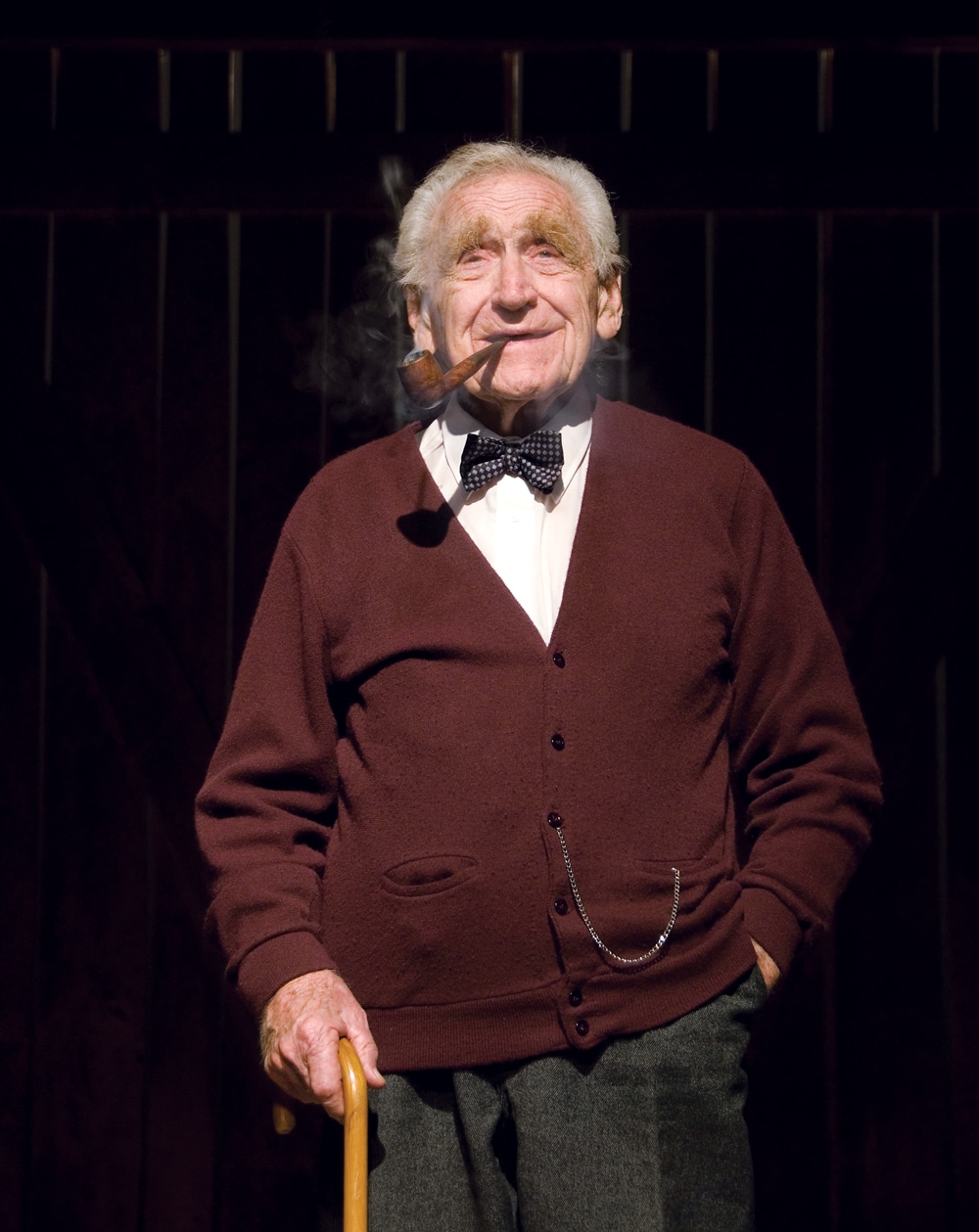
Photo Credit : Deb Porter-Hayes
This feeling remains today, whether the theater is in Peterborough or Tamworth, New Hampshire, or Ogunquit or Madison in Maine, or Stockbridge or Great Barrington in Massachusetts. Or in any of New England’s several dozen summer-theater towns, including where I was on a late July evening last year: Weston, Vermont, sitting in the bandstand on the town green watching people strolling across the lawn toward the Weston Playhouse. In the city you go to see a show—that is the purpose. But in a place like Weston, a village of fewer than 600, you participate in a timeless ritual.
Of all the summer theaters in New England, few are so immersed in the community as the Weston Playhouse, the state’s oldest community theater. A former church, the white-columned Greek Revival building stands on the edge of the green, so handsome that The Boston Globe called it “the most beautiful theater in New England.” In Weston, the playhouse is more than a source of entertainment, more than a cultural institution. Since its first production in 1937 (featuring a 24-year-old Lloyd Bridges in Noel Coward’s Hay Fever), it has become a generational touchstone. Parents take their children, who grow up and then take their own children. It becomes a family heirloom that belongs to all.
Shortly past 7 that July evening, I walked into the theater. People milled around, talking to neighbors; out-of-towners looked at the photos on the lobby walls, images from past plays with faces of actors they might know from television, or movies, or Broadway. The roll call of stars who have appeared across the New England summer-stock landscape reads like a Hollywood Hall of Fame: Henry Fonda, Katharine Hepburn, Bette Davis, Gregory Peck, Humphrey Bogart, Dustin Hoffman, Al Pacino, Celeste Holm. At the Williamstown Theater Festival in Massachusetts, there’s a poster of a young Gwyneth Paltrow in 1991. Bradley Cooper performed there in 2012, followed by Audra McDonald, winner of six Tonys, a few years later.
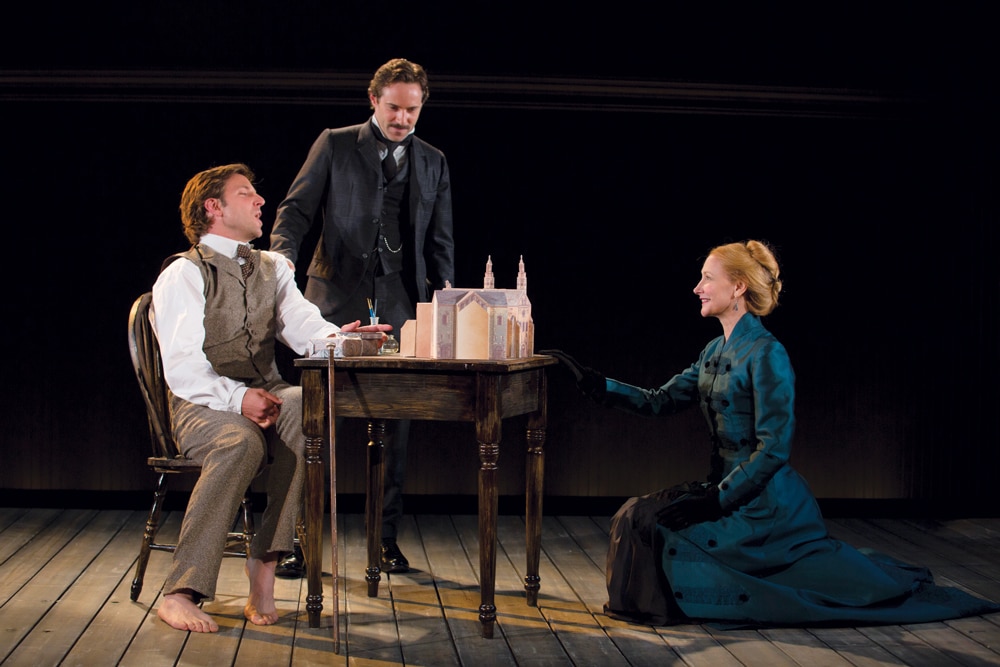
Photo Credit : T. Charles Erickson
A warm Vermont night waited just beyond the Weston Playhouse doors, but when I stepped into the 300-seat theater it was 1906 in the Oklahoma Territory, and for two hours the classic Rodgers and Hammerstein musical Oklahoma! fills the room with song and dance and surprising pathos. Today, the musical asks the question “Who is an outsider?” Susanna Gellert, the playhouse’s artistic director, told me. “Oklahoma! to me is the American musical that answers how does America come together. It doesn’t let anyone off easy. It shows conflict and disturbance. We want to make it a new play for today.”
The 2019 season was Gellert’s first as Weston’s artistic director. She had come from Theatre for a New Audience in Brooklyn, New York, with a daunting mission: to fill the shoes of three legends. Creative directors Malcolm Ewen, Tim Fort, and Steve Stettler had for three decades created a reputation throughout New England and beyond with Weston Playhouse’s musicals and dramas. The time had come, they said, for new energy, new vision. Before they stepped down, they left the legacy of a new year-round theater just up the road, at Walker Farm, where playwrights could showcase new work, where Vermonters could come in from the cold and hear music and sit so close to the actors they could almost touch them.
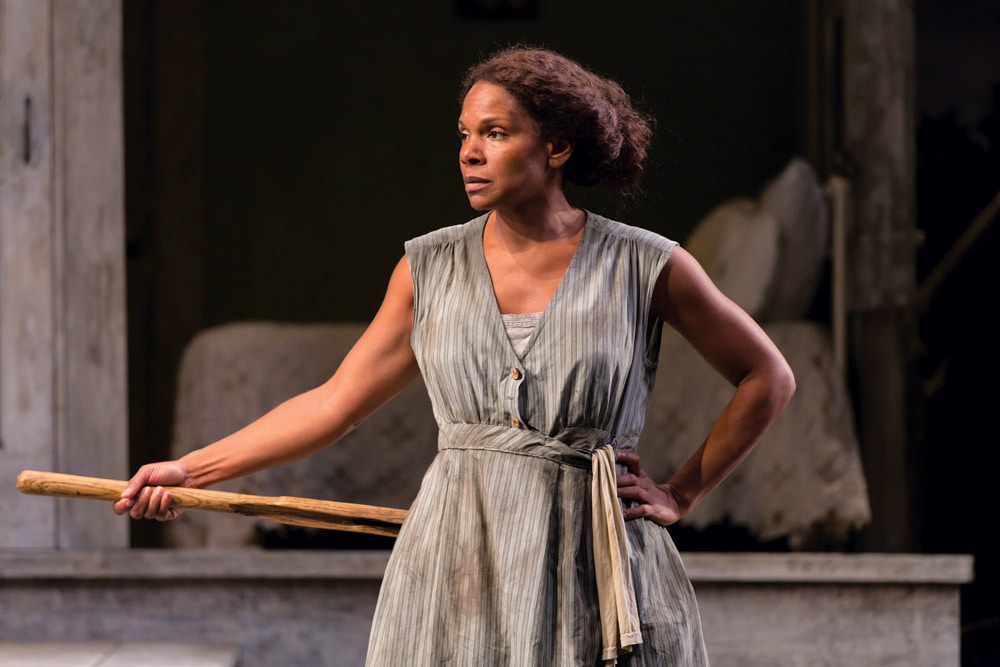
Photo Credit : T. Charles Erickson
Gellert told me that when she holds auditions in New York for the playhouse, “I tell them cell phone service is spotty. There are no big grocery stores or shopping centers. But I say, ‘You will spend your summer where it’s so beautiful and you’ll be able to focus on your work and not what critics may write.’
“And,” she added, “I say, ‘You will get to know your audience in a way that you have never done before.’”
Months after I saw Oklahoma!, I wrote to Philip Stoddard, a New York–based actor who had played Jud Fry, the troubled ranch hand whose longing for the lovely Laurey ultimately leads to his tragic end. I wanted to know what it meant to have been in a town where lights go out when the show is over each night.
He wrote back: “Being embedded in the quiet, slower pace of a rural community led me to artistic discoveries of simplicity and depth—qualities that are often overlooked when living in a metropolis…. I’ve had thrilling experiences of performing in front of large crowds in major cities, but … my experiences of performing in small towns and villages are some of my most cherished memories.
“When I look into the audience and meet the eyes of a stranger, and even for a brief moment, connect beyond subject and object—we realize there’s actually nothing separating us…. A decade from now, I’ll still remember the impossibly clean air, the lush tree-lined hillsides sprawling forever, and the simple, human moments of connection when we breathe and listen together.”




